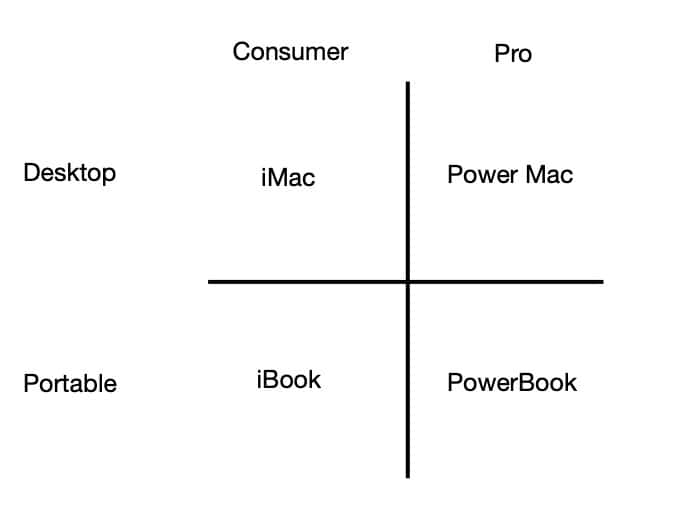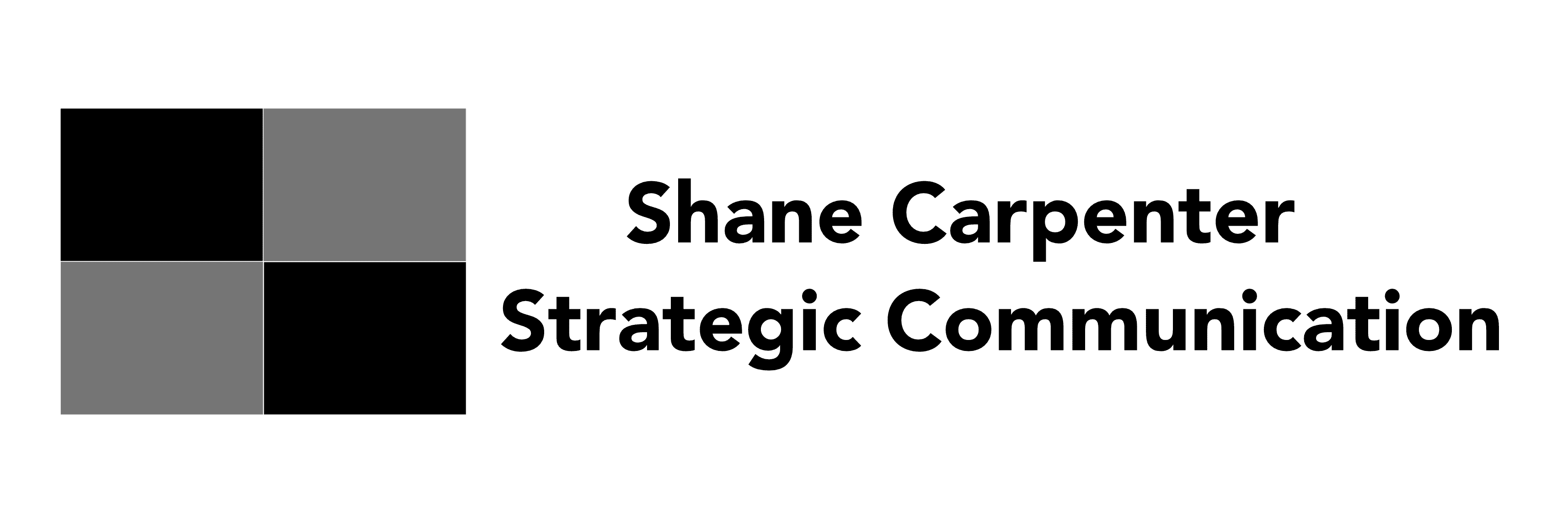
Marketing in our modern world has many ways to connect with people across multiple channels in unique and entertaining ways that can create the type of engagement that doesn’t just bring you new customers but ardent and loyal followers as well.
It’s probably the kind of thing that your marketing grandparents would have killed for.
But there is risk involved that comes in the form of saying yes when you should be saying no.
This might sound contradictory to getting the results you want but I assure you it’s not.
Trying to do to many things is more likely to impede your success than help it.
I’ll talk about that more in a minute but first a story.
Saying Yes Can be Lethal
When Steve Jobs came back to Apple in 1997, the company he co-founded in 1976 was not in good health.
The company was losing money while its stock was falling because of a lack of confidence from investors. Years later it was revealed that Apple was only weeks away from bankruptcy.
The story of how Jobs and his team turned the tide has been covered many times but this isn’t about how Apple was near bankruptcy and then was turned around to become one of the most valuable companies in the world.
This is a story about a lack of focus by saying yes.
When Jobs appeared at Apple’s World Wide Developers Conference (WWDC) shortly after his return, he spoke about how Apple was doing too many things.
In his own words:
“Apple suffered for several years from lousy engineering management.
I have to say it.
And there were people that were going off in 18 different directions doing arguably interesting things in each one of them.
Good engineers. Lousy Management.
And what happened was you look at the farm that’s been created with all these different animals going in different directions and it doesn’t add up. The total is less than the sum of the parts.
And so we had to decide, what are the fundamental directions we’re going in and what makes sense and what doesn’t. And there were a bunch of things that didn’t, and microcosmically they might have made sense, macrocosmically they made no sense.
And you know the hardest thing is when you think about focusing right? You think focusing is saying yes.
No.
Focusing is about saying no. Focusing is about saying no and you’ve got to say no, no, no, no.”
Apple’s issue was they were looking at opportunities and saying yes to as many as possible.
This caused them to lose focus and it reflected in the choices they were making that were doing much more to hurt them than to help them.
In the end, chasing the many opportunities that were available to them didn’t help them make better products nor did it help them with revenue.
The lack of focus that saying “yes” to everything created nearly killed the company.
It was when Jobs said “no” that the company’s fortunes started to turn around.
This problem isn’t isolated to Apple. Many companies are falling into this trap in all aspects of their business but especially in their marketing and communication efforts.
An Abundance of Marketing Options
There is not a lack of options for your marketing and they fall neatly into four areas. These areas are:
- Paid media
- Social media
- Earned media
- Owned media
Paid media is ads.
Earned media is stories and interviews that happen through sources such as newspapers, television, radio, podcasts, and video.
I know you know what social media is but it’s those platforms such as Facebook, Instagram, and TikTok.
Last but certainly not least is owned media. This is your website and your email list. These are things that you own.
Within these four areas are many different options.
Let me break it down for you.
Paid media is made up of both digital and non-digital options such as:
- Newspapers (print and digital)
- Magazines (print and digital)
- TV
- Radio (over the air and satellite)
- Billboards
- Bing
- YouTube
- Snapchat
- TikTok
- Podcasts
- Videocasts
- Mobile Games
- Streaming Platforms (e.g. Tubi, PlutoTV, Hulu, Disney+)
- Native Advertising
Next is social media. You have the following options:
- Threads
- Bluesky
- Snapchat
- Mastodon
- Post
- X
- YouTube
Earned media options include:
- Newspapers
- Magazines
- TV
- Radio
- Podcasts
- Videocasts
Owned media is going to be more narrow. It’s going to be your website and your email list but it does add options such as:
- Blog
- Newsletter
You can do your own count but I see 38 options and I probably missed some things.
I don’t know about you, but I feel tired just reading this list.
While I’m sure you’re not going to say yes to every one of these, you may still be saying yes more than you should.
Sharpen Your Focus
Let’s talk about your reality.
You have a budget and you have to work within that budget.
You also have to allocate people to get the work done.
There is more noise out there than ever and it’s hard to cut through. On top of this, the marketing environment is fractured as I’m sure you already noticed.
The natural inclination for most people to deal with this is to be in as many places as possible but is that really going to help you?
If you say yes to eight channels, whether you have a dedicated marketing team or not, and even if you outsource some or all of the work, can your marketing be executed at a high level? Because, to stand out and get the results your want, mediocrity is not an option.
Going back to the Apple example, when Steve Jobs came back to Apple it had 15 different product classes with variations available for many of them. Providing all these options wasn’t help the company. It was hurting it. 15 different product classes with multiple variations led to mediocre execution because it was too much.
Jobs went to work killing one project after another until it was whittled down to four products. One for each product class:

Saying no to everything else meant they would have the ability to execute at a high level in these four areas. It also allowed them to be already working on the next iteration of a product as a new one was being released.
Over time the company stabilized and returned to profitability and was only then that they moved beyond four products.
Ironically, this fits nicely with an integrated marketing communication model because you also have four areas in which you can work.
Pick one from each area but I want you to focus on the areas you have the most control over and cost the least first.
The channels you choose may look something like this:
- Owned Media
- Newsletter
- Earned Media
- Podcasts
- Social Media
- Paid Media
That’s just an example. Depending on your company and who you’re trying to reach, this may look completely different. Also earned media is most likely going to be the one area where you should be pitching multiple media types if it makes sense.
You have limited resources and you need to allocate them in a way that allows you to execute at the highest level.
Your next question is likely, “How do I know where to focus?”
Good question.
It depends.
Do Your Research
If you want good results, there is no getting around the fact you are going to have to do your research.
There is nothing to be gained by choosing Facebook as your social media channel of choice if your audience is on LinkedIn nor would you want to pitch yourself to podcasts if your audience gets information from magazines.
It’s not just about picking a channel in each of the four areas but finding the right channel in each of the four areas.
This is a lesson that I’ve had to learn myself.
It’s easy to say, and many do, that you should be on Facebook because it has more than 2 billion users.
Don’t be seduced by the number. It may sound good but it doesn’t really mean anything to you if your audience isn’t there.
Your goal isn’t to focus on where most people are. It’s to focus on reaching the people you need to connect with.
Facebook could be the best alternative for you but don’t guess. It’s a waste of both your time and resources and will lead you nowhere.
You need to start by asking yourself some questions.
Where are the people that you are trying to reach? It could be LinkedIn, TikTok, Instagram, or somwehere else.
Where to they get information? Is it a social media network? Is it a magazine? Is it a newspaper (digital or print) or on television?
What kind of problems do they have?
How do they like to be engaged?
Not doing research means you’re gambling. You may win sometimes but chances are you are going to lose more often than you win.
The value of asking these questions isn’t finding out where you will say “yes” to but where you need to say “no”.
And then you need to exercise saying “no” so that can focus.
If your company has been around while you should have data that help give you a headstart when researching.
If you’re part of a newer company, there could still be some general data on your space to help kickstart your research but know you might have to do a little more work but research will be important to your success.
As your doing your research you may find that you won’t find a clearcut decision of where you should be. You may see your audience is on Instagram and TikTok.
As Jobs said, you need to decide the fundamental direction you to go. What makes sense and what doesn’t.
Earlier this year I wrote a post on selecting channels that included two tools that Katie Robbert, CEO of Trust Insights, suggests. I’m going to give you a high-level overview of what they are here but I do go into more detail in the article if you’re interested.
The first tool is a user story which looks like this: As a [persona], I [want to], [so that].
The second tool is the 5Ps which are:
- Purpose
- People
- Process
- Platform
- Performance
The first P is purpose. It answers the question why.
The second P is people. This is all about identifying who needs to be involved.
The third P is process. This identifies how you are going to get things done.
The fourth P is platform. This focuses on determining what tools you need.
And finally, the last P is performance. You are taking action, how are you going to measure success?
This will further help you determine where you should say “no”
I understand the temptation to be everywhere. Especially when you’re competing with others in your space. Let them say yes to everything. You know better.
The road to visibility for your company won’t be found in doing as much as possible.
It’s going to be found in focusing on a few things and doing them well.
Just say no.
*Photo by cottonbro studio via Pexels
- Is Your Marketing Connected? - March 6, 2025
- Stop Planning and Start Strategizing - October 24, 2024
- The Importance of Creating a Connection With Your Marketing - June 6, 2024

